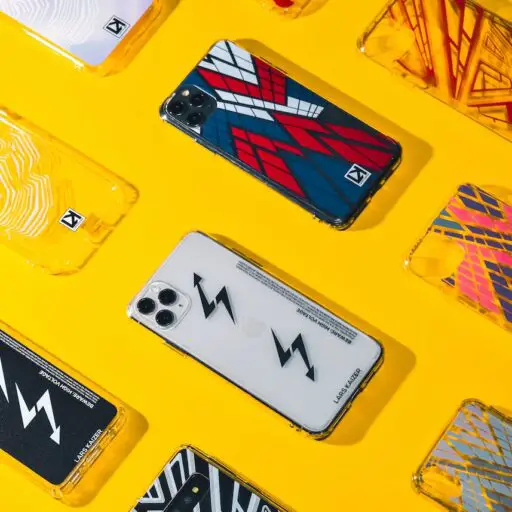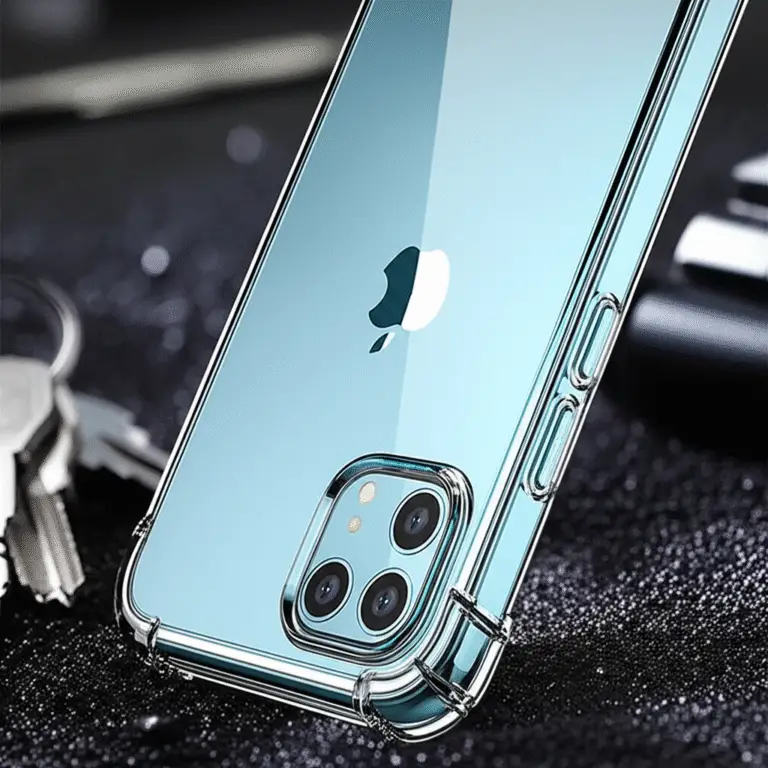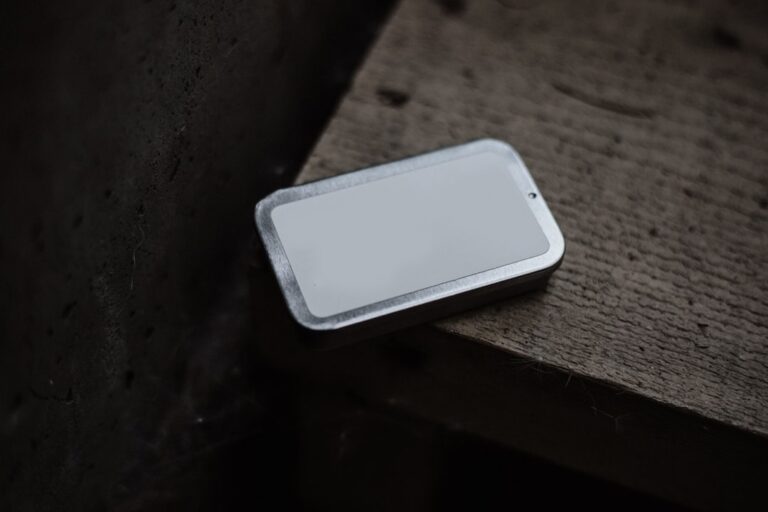Support our educational content for free when you purchase through links on our site. Learn more
Hard Plastic vs. Silicone Cases: The Ultimate 9-Point Guide 🤔
Ever dropped your phone and wondered if your case was up to the task? We’ve all been there! Choosing between a hard plastic and a silicone phone case can feel like navigating a minefield of pros and cons. This comprehensive guide tackles nine key aspects—from drop tests to scratch resistance and even environmental impact—to help you decide which material best suits your needs and lifestyle. We’ll explore the subtle nuances and surprising differences between these popular case materials, ultimately guiding you towards the perfect protective companion for your precious smartphone. Remember that one size doesn’t fit all—the ideal choice depends entirely on your priorities.
Key Takeaways:
- Hard plastic cases generally offer superior scratch resistance and rigidity. They’re a great choice if you prioritize a sleek, durable case that can withstand daily wear and tear.
- Silicone cases excel at shock absorption and provide a comfortable, grippy feel. If you’re prone to dropping your phone, a silicone case’s cushioning properties could be a lifesaver.
- The best protection often comes from a combination of materials. Look for cases that combine a hard outer shell with a shock-absorbing inner layer.
- Consider your lifestyle, budget, and aesthetic preferences when making your decision. There’s no single “best” material—the ideal choice depends entirely on your priorities.
Want to explore some top-rated cases? Check out our recommendations for OtterBox, Spigen, Caseology, SaharaCase, SUPCASE, and Carved cases! Browse our Case Brand Guides, Fashion Cases, and Designer Cases for more options.
Table of Contents
A Brief History of Phone Case Materials: From Hard Shell to Soft Touch
The Great Debate: Hard Plastic vs. Silicone Phone Case Protection
- Drop Test Showdown: Which Material Really Wins?
- Scratch Resistance: The Battle of the Surfaces
- Shock Absorption: Cushioning Your Precious Device
- Screen Protection: Beyond the Case Itself
- Button & Port Accessibility: A Usability Comparison
- Grip and Feel: The Tactile Experience
- Cleaning and Maintenance: Keeping Your Case Pristine
- Durability and Longevity: The Long Game
- Environmental Impact: Eco-Friendly Options?
Beyond the Basics: Exploring Different Types of Hard Plastic and Silicone Cases
Price Point Perspective: Value for Your Money
Aesthetic Appeal: Style and Personalization
Silicone vs. Plastic Phone Cases: The Ultimate Showdown for Your Smartphone
Making the Right Choice: Factors to Consider Before You Buy
Quick Tips and Facts
Before diving into the nitty-gritty, let’s get you up to speed with some quick facts about hard plastic and silicone phone cases. Choosing the right case is crucial—after all, it’s the first line of defense for your precious device! Read our related article on What type of cases are the best? to get a broader overview.
Hard Plastic Cases: Think tough, durable protection. Often made from polycarbonate or a blend of polycarbonate and TPU (thermoplastic polyurethane), they offer excellent scratch resistance and impact protection. However, they can be less flexible and might not absorb shock as effectively as silicone.
Silicone Cases: These are the soft, grippy guys. Made from silicone rubber, they’re known for their excellent shock absorption and comfortable feel. But they might not offer the same level of scratch resistance as hard plastic, and can be prone to discoloration over time.
| Feature | Hard Plastic Case | Silicone Case |
|---|---|---|
| Protection | High impact resistance, good scratch resistance | Good shock absorption, less scratch resistance |
| Feel | Rigid, sometimes slippery | Soft, grippy |
| Durability | Can crack or chip | Can stretch or tear |
| Cleaning | Easy | Can be more difficult |
| Style Options | Wide variety | More limited |
🤔 Still unsure which is right for you? Let’s explore the details!
A Brief History of Phone Case Materials: From Hard Shell to Soft Touch
Believe it or not, phone cases weren’t always the stylish accessories we know and love today! Early phone cases were often bulky, utilitarian things—think basic hard plastic shells designed primarily for protection. As technology advanced and smartphones became more sophisticated, so did the materials used to protect them. The introduction of silicone brought a new level of comfort and shock absorption, while innovations in plastics led to lighter, stronger, and more aesthetically pleasing options. Today, we have a vast array of materials and designs to choose from, catering to every taste and need. The evolution continues, with eco-friendly and bio-degradable options emerging as a growing trend.
The Great Debate: Hard Plastic vs. Silicone Phone Case Protection
This is where things get interesting! Let’s break down the key differences in protection offered by hard plastic and silicone cases. We’ll be comparing various aspects, from drop tests to scratch resistance, to help you make an informed decision.
Drop Test Showdown: Which Material Really Wins?
While a definitive “winner” is hard to declare without specific case models and testing conditions, generally, hard plastic cases tend to offer better protection against direct impacts from drops, due to their rigidity. However, silicone cases often excel at absorbing shock, reducing the force transmitted to your phone. The best protection often comes from a combination of materials—a hard outer shell with a shock-absorbing inner layer. Many brands like OtterBox utilize this hybrid approach.
Scratch Resistance: The Battle of the Surfaces
Hard plastic cases usually win this round. Their harder surface is more resistant to scratches and scuffs than the softer silicone. However, even hard plastic cases can be scratched over time, especially if they’re exposed to abrasive materials like keys or coins in your pocket. Silicone cases, while softer, can still accumulate minor scuffs and abrasions.
Shock Absorption: Cushioning Your Precious Device
This is where silicone cases often shine. Their flexibility allows them to absorb and dissipate shock from drops more effectively than rigid plastic cases. This is especially important for protecting your phone’s internal components from damage. However, the level of shock absorption varies greatly depending on the thickness and design of the case.
Screen Protection: Beyond the Case Itself
While the case itself provides protection, remember that a screen protector is crucial for complete protection. A tempered glass screen protector will significantly reduce the risk of screen damage from drops and scratches, regardless of whether you choose a hard plastic or silicone case.
Button & Port Accessibility: A Usability Comparison
This often comes down to the specific design of the case. Some hard plastic cases can have slightly less precise cutouts for buttons and ports, leading to a slightly less responsive feel. However, many well-designed cases, regardless of material, offer excellent accessibility.
Grip and Feel: The Tactile Experience
This is largely a matter of personal preference. Silicone cases are generally known for their grippy texture, making them less likely to slip from your hand. Hard plastic cases can be slippery, especially if they have a smooth finish. However, some hard plastic cases incorporate textured grips to improve handling.
Cleaning and Maintenance: Keeping Your Case Pristine
Hard plastic cases are generally easier to clean. A simple wipe with a damp cloth usually suffices. Silicone cases can be more challenging to clean, as they tend to attract dust and grime. You might need to use a slightly more abrasive cleaning method, but be careful not to damage the silicone.
Durability and Longevity: The Long Game
Hard plastic cases tend to be more durable in the long run, resisting stretching and tearing. However, they can crack or chip upon impact. Silicone cases can stretch or tear over time, especially if subjected to repeated bending or twisting.
Environmental Impact: Eco-Friendly Options?
The environmental impact of both materials is a growing concern. While silicone is generally considered more environmentally friendly in terms of its production and disposal, the manufacturing processes for both materials can have environmental consequences. Look for cases made from recycled materials or those that are themselves recyclable.
Beyond the Basics: Exploring Different Types of Hard Plastic and Silicone Cases
The world of phone cases goes beyond just “hard plastic” and “silicone.” Within each category, you’ll find a wide range of styles, designs, and features. For example, some hard plastic cases incorporate shock-absorbing materials, while some silicone cases feature reinforced corners for added drop protection. Exploring different brands and models will reveal a surprising diversity of options. Check out our Case Brand Guides for more information on specific brands and their offerings.
Price Point Perspective: Value for Your Money
The price of a phone case can vary widely depending on the brand, materials, and features. While you might find inexpensive options, investing in a higher-quality case can offer better protection and longevity, ultimately saving you money in the long run. Consider the balance between price and the level of protection you need.
Aesthetic Appeal: Style and Personalization
Let’s be honest, aesthetics matter! Hard plastic cases offer a wider range of design options, from sleek and minimalist to bold and colorful. Silicone cases often come in a more limited range of colors and designs, although some brands offer unique textures and patterns. Ultimately, the best-looking case is the one that reflects your personal style. Browse our Fashion Cases and Designer Cases for inspiration!
Silicone vs. Plastic Phone Cases: The Ultimate Showdown for Your Smartphone
So, which material reigns supreme? The truth is, there’s no single “best” material. The ideal choice depends on your priorities. If you prioritize maximum scratch resistance and rigidity, a hard plastic case might be the better option. If shock absorption and a comfortable grip are your top concerns, a silicone case could be the winner. Many people even opt for a hybrid approach, using a hard plastic case with a silicone inner lining for the best of both worlds.
Making the Right Choice: Factors to Consider Before You Buy
Before you buy, consider these factors:
- Your lifestyle: Are you clumsy? Do you work in a harsh environment? A more robust case might be necessary.
- Your budget: Cases range in price, so set a budget before you start shopping.
- Your aesthetic preferences: Choose a case that you’ll love to look at and carry every day.
- Your phone model: Ensure the case is compatible with your specific phone model.
Conclusion
So, the age-old question: hard plastic or silicone? The answer, my friend, is… it depends! 😉 There’s no one-size-fits-all solution. Hard plastic cases generally offer superior scratch resistance and rigidity, while silicone cases often provide better shock absorption and grip. The best choice for you hinges on your priorities: Do you value supreme scratch protection above all else? Or is a comfortable, shock-absorbing grip more important? Consider your lifestyle, budget, and aesthetic preferences. Ultimately, the perfect case is the one that best protects your phone and reflects your personal style. We hope this comprehensive guide has helped you navigate the world of phone case materials and make an informed decision!
Recommended Links
Want to explore some top-rated cases? Here are a few options to check out:
- OtterBox: Amazon | Walmart | OtterBox Official Website
- Spigen: Amazon | Walmart | Spigen Official Website
- Caseology: Amazon | Walmart | Caseology Official Website
- SaharaCase: SaharaCase Official Website
- SUPCASE: SUPCASE Official Website
- Carved: Carved Official Website
For further reading:
- The Ultimate Guide to Smartphone Cases: Amazon
FAQ
What are the advantages of using a hard plastic phone case?
Hard plastic cases offer several advantages:
- Superior scratch resistance: They’re less prone to scratches and scuffs than silicone cases.
- Rigidity and impact protection: They provide excellent protection against direct impacts from drops.
- Easier cleaning: Their smooth surface makes them easier to clean than silicone cases.
- Wider range of styles: They are available in a wider variety of colors, designs, and finishes.
Are silicone cases more durable than hard plastic cases for long-term use?
Not necessarily. While silicone cases are flexible and can withstand bending and twisting, they are prone to stretching, tearing, and discoloration over time. Hard plastic cases, while more susceptible to cracking or chipping, generally maintain their shape and structural integrity better in the long run. The durability of both types of cases depends heavily on the quality of the materials and manufacturing.
Do hard plastic cases provide better protection against drops and scratches than silicone cases?
Generally, yes. Hard plastic cases offer better protection against scratches due to their harder surface. Regarding drops, hard plastic cases provide better protection against direct impacts, but silicone cases often offer superior shock absorption. The best protection often comes from a combination of materials.
How do I choose between a hard plastic and silicone case for my specific device model?
Consider these factors:
- Your lifestyle: If you’re prone to dropping your phone, a silicone case’s shock absorption might be preferable. If you’re more careful, a hard plastic case might suffice.
- Your priorities: Do you prioritize scratch resistance or shock absorption?
- Your budget: Prices vary widely.
- Aesthetics: Choose a case that you find visually appealing.
- Check reviews: Read reviews of specific cases for your phone model before making a decision.
What are some common drawbacks of silicone phone cases?
While silicone cases offer excellent shock absorption and grip, they also have some drawbacks:
- Prone to discoloration: They can yellow or stain over time, especially lighter colors.
- Difficult to clean: Dust and grime can cling to their surface.
- Less scratch-resistant: They are more susceptible to scratches than hard plastic cases.
- Can stretch and lose shape: Over time, they can lose their original shape due to repeated bending and flexing.
Reference Links
- OtterBox
- Spigen
- Caseology
- SaharaCase
- SUPCASE
- Carved
- Hard vs. Soft Phone Cases: Comparing Protection, Durability, and … Carved Blog





